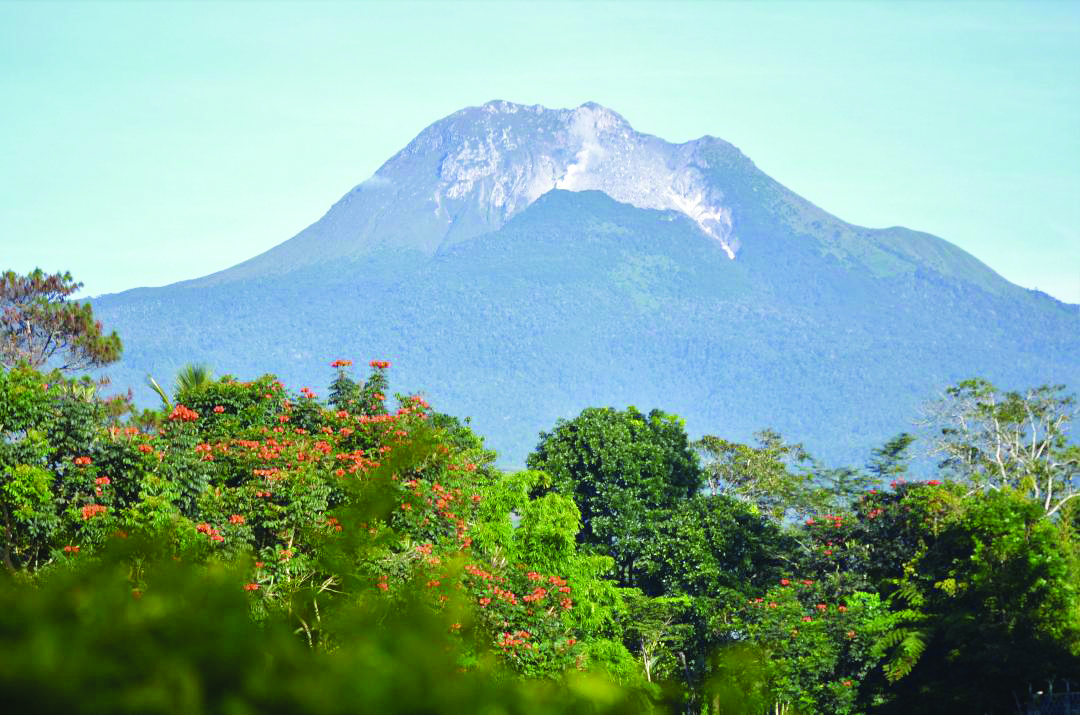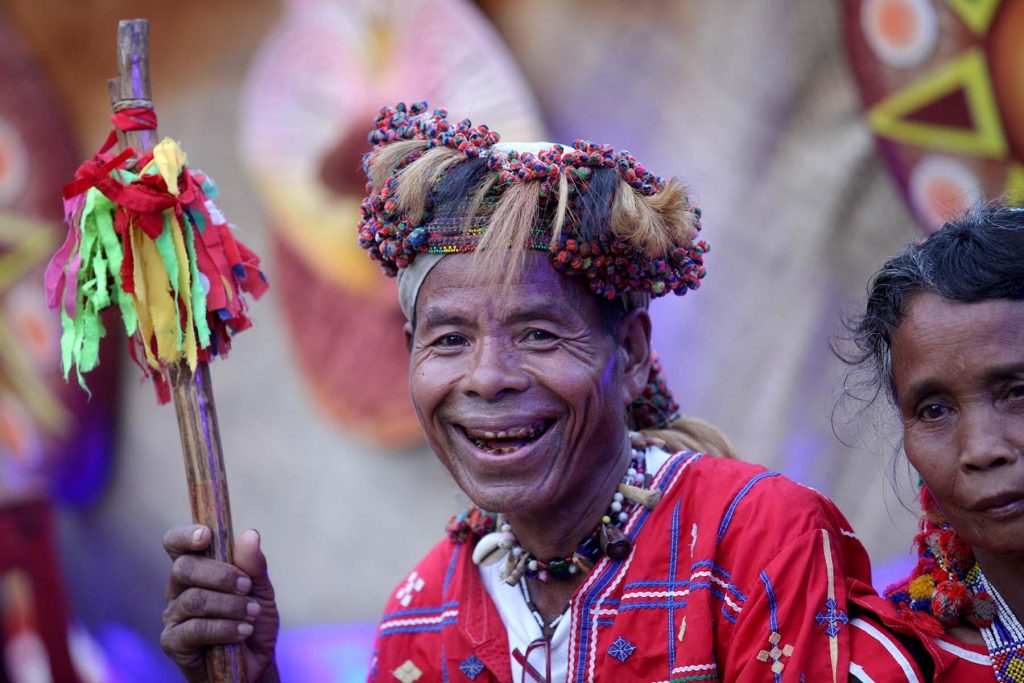It all started as Apo Duwaling, but when Rodrigo R. Duterte became the mayor, he renamed the festival as “Kadayawan sa Dabaw.” Kadayawan comes from the Mandaya word, madayaw, which means “good, valuable, superior or beautiful.”
The festival is structured as “the celebration of life, a thanksgiving for the gifts of nature, the wealth of culture, the bounties of harvest and serenity of living.”
Now on its 35th year, Kadayawan sa Dabaw will still be celebrated – but without much fanfare and lavishness. According to Mayor Sara Duterte-Carpio, the celebration will push through as a way to thank the Almighty for the blessings the city receives this year.
Here’s what you need to know about this mother of all festivals in Mindanao:

K is for the King of Philippine birds
Davao is known for Philippine Eagle, an endangered species whose research facility is based in Calinan. Known in the science world as Pitchecophaga jefferyi, it is the second largest eagle in the world (after the Harpy Eagle of Central and South America). It was collected in the country as early as 1703, but it was until in 1896 that Dr. John Whitehead, an English naturalist, “discovered” the splendid raptor on the island of Samar. He called it the “Great Philippine Eagle.”
Formerly known as monkey-eating eagle (its generic name, Pitchecophaga, comes from the Greek words pithekos or “monkey” and phagein meaning “eater”), the name was changed to Philippine Eagle by a Presidential Decree No. 1732 in 1978 after it was learned that monkeys comprise an insignificant portion of its diet, which consists mainly of flying lemurs, squirrels, snakes, civets, hornbills, rodents, and bats.
“The variety and size differences of prey suggest that the Philippine Eagle is an opportunistic hunter with preference of tree-dwelling species,” according to a study conducted from 1978 to 1983 of the eagle’s food habits. “Its choice of prey may be related to the relative abundance of species or coincides with the breeding season of the particular prey.”
According to PEF, the Philippine Eagle stands a meter high, weighs anything from four to seven kilograms and has a grip three times the strength of the strongest man on earth. With a wingspan of nearly seven feet and a top speed of 80 kilometers per hour, it can gracefully swoop down on an unsuspecting monkey and carry it off without breaking flight.

A is for Apo, the highest peak of the country
With an elevation of 2,954 meters (9,692 feet) above sea level, Mount Apo is the country’s highest mountain. The peak overlooks Davao City 45 kilometers to the northeast. It is a protected area and a natural park of the Philippines.
In the beginning, Mount Apo was the first of the three emblems of the festivity, when it was then known as Apo Duwaling. There’s an interesting story on how the mountain got its name.
“The name of Mount Apo comes from Apo, a title respect meaning ‘revered leader’ in various languages of the surrounding lumad tribes,” the Wikipedia notes. “It is the shortened form of the original Manobo and Kalagan name Apo Sandawa, the name of the spirit of the mountain. The mountain itself is considered sacred grounds. Various rituals to Apo Sandawa are conducted by the supreme waylan (shaman) known as the Diwata, who also serves as the medium for Apo Sandawa and the ancestor spirits of the Manobo and Kalagan tribes.”

D is for Davao and durian
“Murder City” – that was how the defunct Asiaweek described Davao City in the early 1980s. Each day, some two to three people were killed and thrown in the ditch. Foreigners and even those from nearby provinces shunned this once bustling and promising city. But it changed after the 1988 elections. The newly-elected mayor, Rodrigo R. Duterte, did an impossible task – that of restoring peace and order of a city that was divided by religion and ideological belief.
Today, Davao City is “one of the most livable cities in the Asia” and “one of the safest cities in the world.”
“Don’t be surprised if you meet someone in this city who tells you that it’s safe to walk around here because ‘Davao is much safer than New York.’ Unlike in the past when cops are easily terrorized by urban guerrillas or criminals with impunity, now it’s the other way around,” wrote veteran journalist Aurelio A. Peña.
The de facto capital of Mindanao, Davao is one of the largest cities in the world with a total land area of 224,000 hectares. Its boundaries encompass commercial areas as well as beaches, mountains, and forests. Approximately, it is 7.8 times the size of Cebu and three times that of the entire Metro Manila.
D stands for durian, another original emblem of the original festivity. Duwaling is actually a combination of durian and waling-waling. A scribe, definitely a foreigner, described durian like this: “It smells like hell but tastes like heaven.”
It’s the smell that makes durian controversial and shunned. The New York Times touted durian as the world’s smelliest fruit. “Durian stinks so badly that it’s banned from hotels and mass transit in parts of Asia,” it said.
In introducing durian to American readers, Alison Spiegel wrote: “If a fruit smelled like feet, would you eat it? If that fruit smelled like damp feet that had been festering in a soggy boot for hours, could you even bear to look at it? What if the moisture came not from a puddle or some sort of bad weather, but from dank, dirty sweat? Would you run away and never speak this fruit’s name again?”
Its potent, lingering smell is the reason why durian fruits are banned on airplanes, trains, vans and buses. It is also banned on many types of public transport across Hong Kong, Japan, Singapore, and Thailand.
The shape of durian fruit ranges from oblong to round, the color of its husk green to brown, and its flesh pale yellow to red, depending on the species. What makes it distinct is that it is covered in formidable looking spikes that if you hold the fruit with your bare hands, the spikes could potentially pierce the skin.

Y is for yells and young people.
“It’s very beautiful and colorful,” said David, a first-timer in Davao City, of street dancing. “I like the rhythm, the music, the vibrant and the people. We are having too much fun here.”
The street dancing was just one of the highlights of the week-long Kadayawan sa Dabaw. “Indak-Indak is wildly popular because of the distinctively Mindanaoan beat and costumes,” one visitor commented.
“Tourists come to Davao to watch hundreds of people dancing with vigor in the streets, clad in their native attire and carrying extravagant props that would give Hollywood studios a serious run for their money.”
“The Indak-Indak sa Kadalanan is wildly popular because of the distinctively Mindanaoan beat and costumes,” one visitor commented.
“Several tourists come to Davao to watch hundreds of people dancing with vigor in the streets, clad in their native attire and carrying extravagant props that would give Hollywood studios a serious run for their money.”
Unfortunately, due to the coronavirus disease 2019 (COVID-19) pandemic this year, street dancing wouldn’t be stated.

A is for alluring flowers and fruits
Pamulak (floral float parade) is the finale of the celebration. It is patterned after the Pasadena Parade of Roses in the United States – where flowers and fruits are set in colorful floats by business establishments, community assemblies and peoples’ organizations as they promenade on the streets symbolizing all the bounty sustainably enjoyed by the city’s residents.
Again, this much-awaited parade won’t be observed this year due to the pandemic.

W is for waling-waling
Orchids are one of the flowers Davao City is known for. The most famous of them all is the exotic waling-waling, which used to abound in the forests of Mount Apo.
“The waling-waling’s beauty adorns our treetops, especially in Davao, Cotabato, and Zamboanga where it is endemic. But there are threats to its survival, as the flowers that grow and thrive in the wild are harvested for commercial and decorative purposes, and their habitat is destroyed by deforestation,” said Loren Legarda who pushed for making the orchid the country’s second flower icon (after sampaguita) when she was still with the Senate.
Waling-waling “is one of the finest orchid species endemic to the Philippines, desired by orchid growers and breeders alike for its showy and attractive flowers and ability to impart its vigor and floral characteristics to its progeny,” wrote Dr. Helen Valmayor in her book, Orchidiana Philippiniana.
The waling-waling, named in “allusion to a moth in flight,” was discovered on Mindanao in 1882. It used to grow on tree trunks in the rainforests of Davao, Sultan Kudarat and other parts of the island. It is worshipped as diwata (fairy) by the native Bagobos.

A is for arresting colors of the celebration
In explaining the popularity of the festival, Rikki Enriquez, the director of the senior high school of Ateneo de Davao University, said: “Kadayawan tries to showcase and celebrate to the world the best of Davao arts and culture. It recognized our very rich tribes and heritage. In addition, it contributes to the city’s economic prosperity via economic activities and provides good deals in tourism.”
“I consider Kadayawan as the festival of festivals since it has the most number of cultural activities compared to other festivals in the country,” commented Serapion Metilla, the father of bonsai in the country. “For example, there’s dancing in the streets, the floral float parade, horse fight, durian festival, cultural minorities encounter, flower and garden shows, and many other activities which other parts of the country could not show.”

N is for the natives, the lumads, and the tribals
Although Kadayawan is distinctly Davao, it’s more than just a Davao festivity. As Arturo “Art” Boncato, Jr., who was then the assistant secretary of the Department of Tourism, told The Mindanao Daily Mirror: “This is not only Davao. Kadayawan brings the real message that this is a festival of the people – the indigenous people (IP).”
Through the festival, Boncato believed Davao has placed the IPs into the mainstream of the celebration. “We have so much pride in our indigenous people that (it) is the biggest achievement of Kadayawan,” he was quoted as saying.
The celebration is also in line with the Declaration on the Rights of Indigenous Peoples which was adopted during the 61st session of the United Nations at the UN Headquarters in New York in September 2007.
The Declaration, for one, “emphasizes the rights of indigenous peoples to maintain and strengthen their own institutions, cultures and traditions, and to pursue their development in keeping with their own needs and aspirations.”
At one time, the festival’s theme was “Ten Tribes, One Vibe.” But it was found out there were actually 11 tribes living in the city: Ata, Bagobo-Klata, Bagobo-Tagabawa, Iranun, Kagan, Maguindanaon, Maranao, Matigsalog, Ovu Manubo, Sama and Tausug.
In the beginning, ethnic tribes lived together harmoniously, in peace and friendship. They were the ones who gave the province a name; Davao came from the word daba-daba, which means “fire.”
Indeed, Kadayawan sa Dabaw has gone a long, long way. “As the longest-running community festival in Mindanao, Kadayawan has metamorphosed into a grand celebration that honors Davao’s rich cultural heritage and the many blessings bestowed on the city,” commented the Davao Tourism office. “Kadayawan’s sights and sounds remain unparalleled.”






